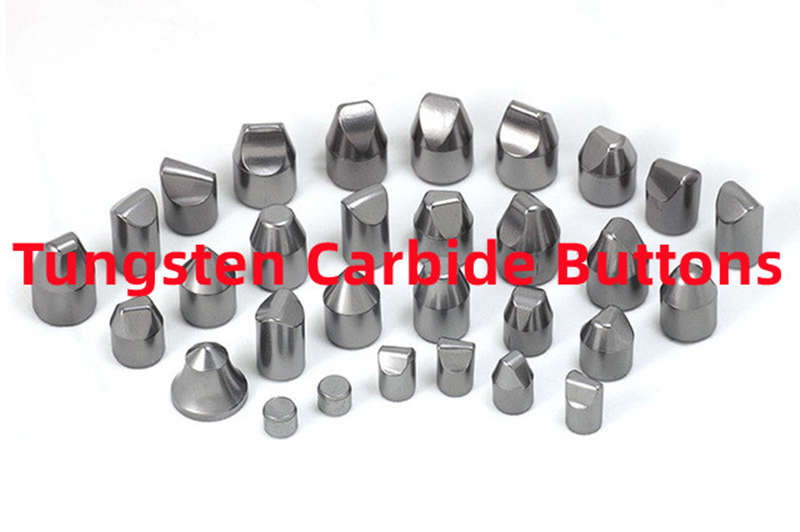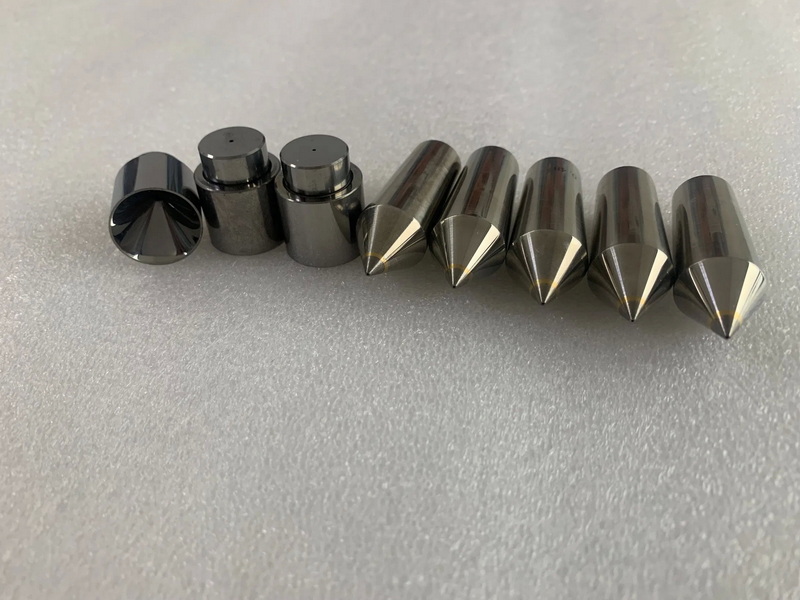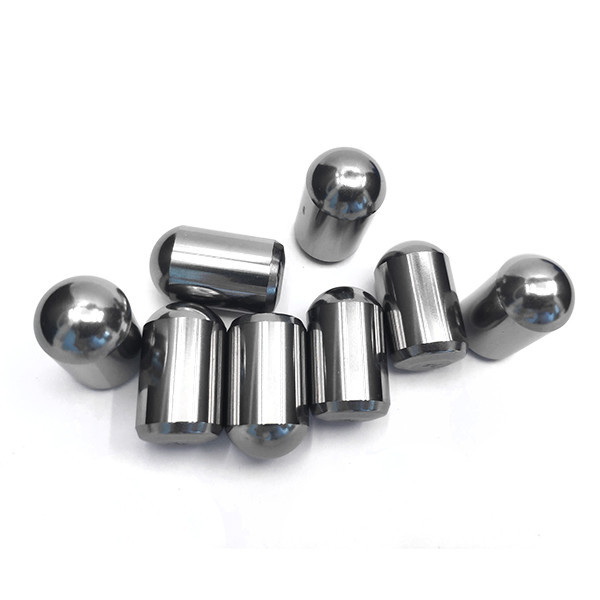Content Menu
● Introduction
● What Are Carbide Buttons?
● Manufacturing Process of Carbide Buttons
>> Raw Material Preparation
>> Powder Mixing and Wet Milling
>> Spray Drying
>> Pressing
>> Sintering
>> Surface Finishing
>> Quality Control
● Insertion Techniques for Tool Manufacture
● Industry Applications of Carbide Buttons
>> Mining and Drilling
>> Oil & Gas Exploration
>> Construction
>> Metalworking & Machining
>> Other Applications
● Top U.S. Carbide Button Manufacturers
● Advantages of U.S. Carbide Button Suppliers
● OEM Services for International Clients
● Innovations and Future Trends
● Conclusion
● Frequently Asked Questions (FAQ)
>> 1. What are the main manufacturing steps for carbide buttons?
>> 2. Which industries most commonly use carbide buttons?
>> 3. Why is hot pressing the preferred method for inserting carbide buttons?
>> 4. What advantages do U.S. carbide button manufacturers provide international customers?
>> 5. Are there emerging trends in the carbide button sector?
Introduction
Carbide button manufacturers and suppliers in the United States deliver high-performance solutions for global industries in mining, construction, metalworking, oil and gas, and beyond. Known for producing reliable, precision-engineered products, these companies support OEM requirements with advanced technology and rigorous quality standards.

What Are Carbide Buttons?
Carbide buttons are sintered inserts, commonly made from tungsten carbide and a binder like cobalt. Renowned for their exceptional hardness and abrasion resistance, these components are widely used to reinforce drilling, cutting, and milling tools exposed to extreme conditions. Carbide buttons are designed in various shapes—dome, parabolic, chisel—to suit different tools and applications, ensuring efficient performance even in tough environments.
Manufacturing Process of Carbide Buttons
Modern manufacturing of carbide buttons involves several detailed stages for quality, performance, and durability:
Raw Material Preparation
Companies select high-purity tungsten and cobalt powders. The tungsten ore undergoes chemical processing into tungsten oxide, which is then reduced to tungsten carbide powder. Cobalt or sometimes nickel powder acts as the binder for toughness.
Powder Mixing and Wet Milling
Tungsten carbide and cobalt are uniformly mixed, then wet-milled using water or ethanol. This ensures fine, consistent particles and binding, which are crucial for resulting strength.
Spray Drying
The mixture is dried to achieve optimal moisture content and granule formation. Spray drying and vacuum drying are the prevalent methods.
Pressing
Automatic and hydraulic presses shape the dried powder into button forms using specific dies. Carbide buttons are available with various head shapes—conical, parabolic, spherical, or spoon—plus optional chamfers and pinholes.
Sintering
The shaped green compacts are sintered under precise conditions (approx. 1400°C) in a Hot Isostatic Pressing (HIP) furnace. This critical step develops the carbide's density, hardness, and microstructure.
Surface Finishing
Post-sintering, buttons are ground, polished, and sometimes coated (e.g., titanium plating) for enhanced durability and corrosion resistance. Coating selection is based on targeted industrial environments.
Quality Control
Every batch is inspected for microcracks, hardness, and dimensional accuracy using micrometers and specialized tests. Superior quality control ensures reliability in the toughest conditions.
Insertion Techniques for Tool Manufacture
Carbide buttons are inserted into drill or tool bodies by one of several main methods:
- Copper Brazing: Buttons are welded into holes using copper or silver alloys. While effective, it may induce thermal stresses and microcracks, reducing hardness and bending strength.
- Cold Pressing: Buttons are pressed directly into holes, but this can cause stress to the carbide and is less favored for demanding applications.
- Hot Pressing: The preferred, modern method. Bit bodies are heated to expand button holes, carbide buttons are inserted, and the body contracts as it cools—creating a secure, stress-minimized bond. This strategy retains hardness, wear resistance, and extends tool life.
Industry Applications of Carbide Buttons
Carbide button manufacturers and suppliers support a wide spectrum of industries, each noting specific benefits:
Mining and Drilling
Carbide button drill bits are the standard for rock penetration and ore extraction, renowned for consistent performance and long lifespan.
Oil & Gas Exploration
Downhole drilling bits containing carbide buttons enable the penetration of tough geological strata, supporting both onshore and offshore operations.
Construction
Carbide buttons power concrete cutting, foundation drilling, and excavation, improving efficiency and equipment longevity.
Metalworking & Machining
Precision carbide inserts deliver extended tool life and consistent tolerances for tough alloy machining, critical in automotive and aerospace manufacturing.
Other Applications
- Woodworking tools (chisels, saw blades)
- Snow plows and road equipment
- Bridge and tunnel boring tools

Top U.S. Carbide Button Manufacturers
Leading American companies are recognized for excellence:
- Kennametal Inc.: Renowned for global innovation, high-grade products, and broad industry coverage.
- Sandvik Coromant: Specializes in mining, construction, and custom tool design.
- Seco Tools, Walter Tools, Garr Tool, LMT Onsrud, Tungaloy America, MA Ford: Each offers strengths in precision, complex shape design, and fast order turnaround.
- Mitsubishi Materials, Sumi-Tomo Electric Carbide, Ingersoll Cutting Tools: Leaders in OEM supply, custom engineering, and global support.
These manufacturers invest heavily in research and quality—the backbone of advanced American carbide button production.
Advantages of U.S. Carbide Button Suppliers
Choosing U.S. carbide button suppliers promises notable advantages:
- Advanced production techniques, including HIP sintering and micro-grain carbide.
- ISO-certified quality systems for performance consistency.
- OEM/ODM customization to global specifications.
- Rapid delivery cycles and responsive technical support.
OEM Services for International Clients
Most U.S. manufacturers accommodate international brands, wholesalers, and producers through robust OEM and ODM services. This covers:
- Custom design and engineering to meet regional standards.
- High-capacity manufacturing for global export.
- Competitive pricing and flexible logistics solutions.
Such services foster enduring partnerships and support growth in international markets.
Innovations and Future Trends
Carbide button manufacturing continues to evolve:
- Introduction of micro-grain carbide for increased toughness.
- Advanced coatings to boost wear resistance and lifespan.
- Sustainability efforts, such as recycling and energy-efficient processes.
Research and collaboration between American companies and overseas brands drive further innovation.
Conclusion
Carbide button manufacturers and suppliers in the United States offer top-tier, high-performance products that elevate industrial productivity, safety, and cost-effectiveness. Their commitment to quality, innovation, and international collaboration supports a broad array of clients, from mining and construction to precision manufacturing. Global buyers benefit not only from the technical strengths and customized services of American producers but also from the reliability and continuous improvement that defines this dynamic industry. U.S. partners remain at the forefront, providing efficient, robust solutions for challenging environments.

Frequently Asked Questions (FAQ)
1. What are the main manufacturing steps for carbide buttons?
Manufacturing involves raw material preparation, mixing, wet milling, spray drying, pressing, sintering, finishing, and rigorous quality checks.
2. Which industries most commonly use carbide buttons?
Major users include mining, oil & gas, construction, metalworking, woodworking, and infrastructure engineering.
3. Why is hot pressing the preferred method for inserting carbide buttons?
Hot pressing minimizes stress during insertion, maintains carbide properties, and strengthens the bond between carbide and tool bodies.
4. What advantages do U.S. carbide button manufacturers provide international customers?
They offer OEM/ODM customization, rapid delivery, stringent quality control, advanced design, and competitive pricing.
5. Are there emerging trends in the carbide button sector?
Trends include micro-grain carbide development, enhanced coatings, digital quality control, and greener manufacturing practices.
















